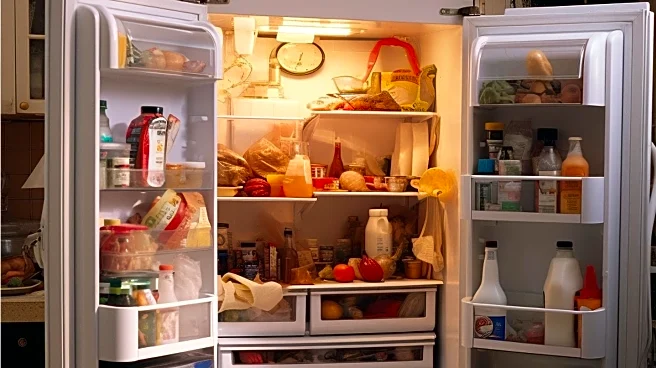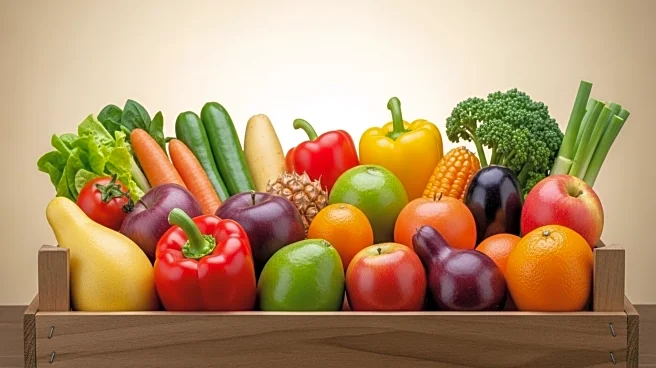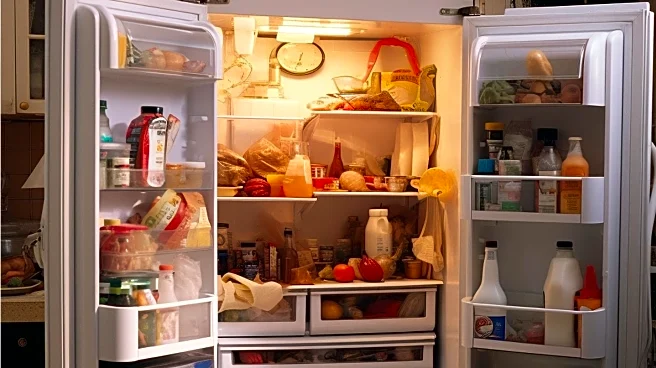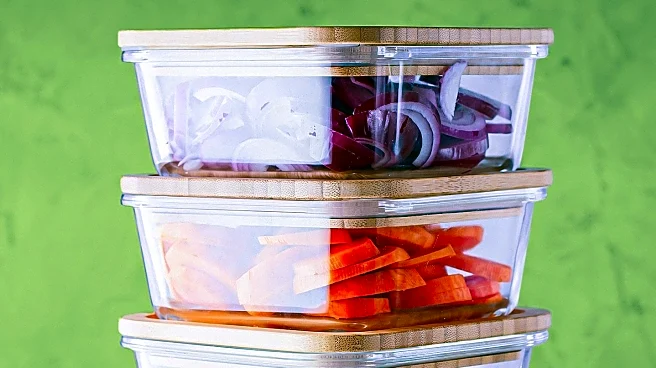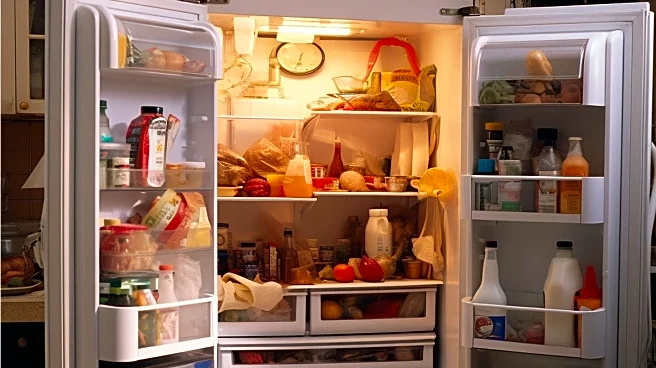What's Happening?
Recent insights from food scientists highlight a common household issue: overstuffing refrigerators. This practice can lead to uneven cooling, causing food to spoil faster. According to experts, when a refrigerator is packed too tightly, airflow is restricted, leading to temperature inconsistencies. Bryan Quoc Le, a food scientist, explains that blocked vents can cause the internal temperature to rise, creating 'hot spots' where bacteria can thrive. This can result in food entering the 'danger zone' of temperatures between 40°F and 140°F, where bacterial growth is rapid. Keith R. Schneider, a professor of food safety, notes that this can particularly affect ready-to-eat foods like deli meats and dairy products, which are often stored in vulnerable areas like door shelves and back corners.
Why It's Important?
The implications of improper refrigerator use are significant for food safety and household economics. Spoiled food not only poses health risks, such as food poisoning from bacteria like Salmonella and E. coli, but also leads to increased food waste. In an economic context where food prices are rising, minimizing waste is crucial for household budgets. Additionally, overstuffing can cause refrigerators to work harder, potentially increasing energy consumption and utility bills. Understanding and implementing proper storage techniques can help mitigate these risks, ensuring food safety and reducing unnecessary expenses.
What's Next?
To address this issue, experts recommend maintaining a refrigerator that is about two-thirds full to allow for proper air circulation. Consumers are advised to use inexpensive thermometers to monitor temperature variations within the fridge. Proper organization, such as storing dairy and eggs on middle shelves and practicing 'first in, first out' food rotation, can further enhance food safety and efficiency. These steps can help households maintain optimal refrigerator performance and reduce the risk of foodborne illnesses.
